Beef Bone Broth makes a great base for soups, stews, and gravies. It’s easier than you’d think to make at home and once you try, you’ll never buy store-bought again. Plus, I’m sharing all my secrets and tips for making the most gelatinous broth!
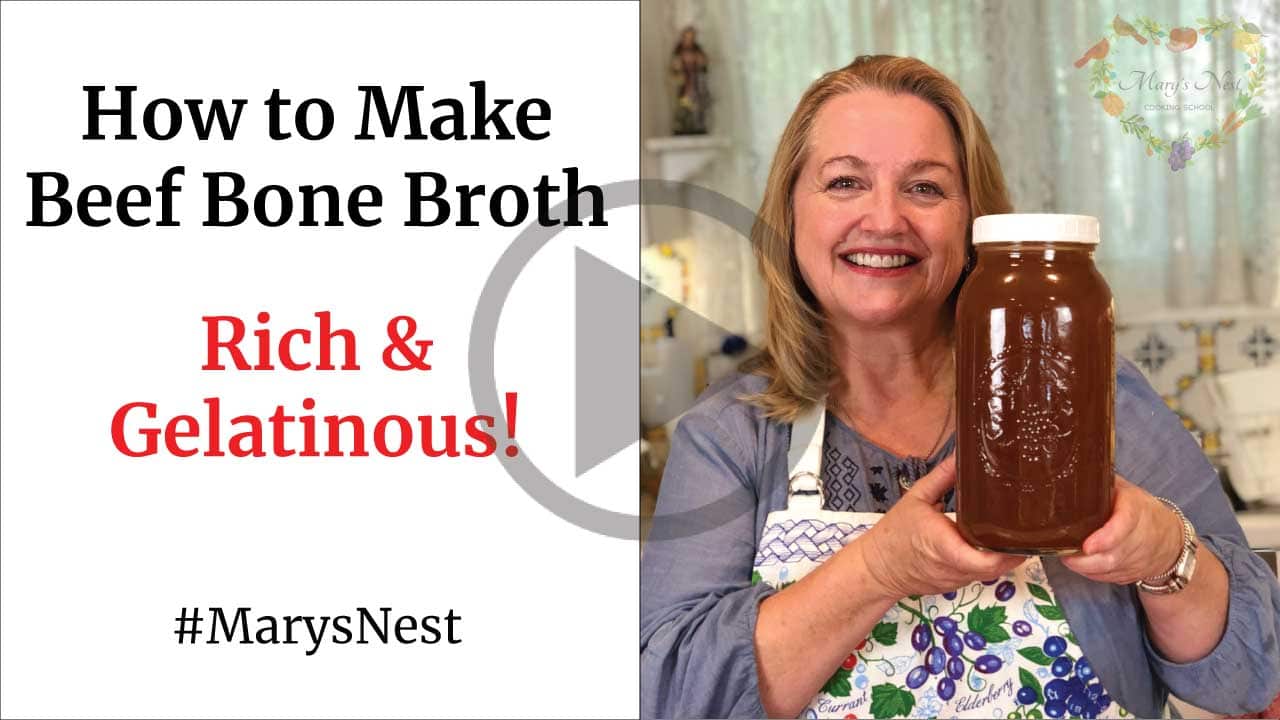
Affiliates note: As an Amazon Associate I earn from qualifying purchases. My content may contain affiliate links to products and services. If you click through and make a purchase, I’ll receive a small commission. It does not affect the price you pay.
Table of Contents
- What Makes the Best Beef Bone Broth?
- What is Bone Broth?
- Why Is a Gelatinous Bone Broth Important?
- Ingredients to Make Bone Broth
- What are the Best Bones for Bone Broth?
- How to Make Beef Bone Broth
- Recipe Tips
- What to Do With Beef Bone Broth
- Storing Tips
- Download Your Free 36-Page Pantry List
- The Modern Pioneer Cookbook
- Kitchen Academy Videos
- More Kitchen Pioneer Videos
- How to Make Rich and Gelatinous Beef Bone Broth Recipe
Although I love my Roast Chicken Bone Broth, Beef Bone Broth is the real jewel in the crown. It’s so tasty on its own or sprinkled with a bit of sea salt.
It also makes a great base for soups, stews, and gravies. And in this video, I let you in on a little secret…which are the best bones to use to get the most gelatinous beef broth!
Previously, I shared with you my How to Make Roast Chicken Bone Broth for Pennies a Jar video where I make roast chicken bone broth from the scraps left over after making a Roast Chicken.
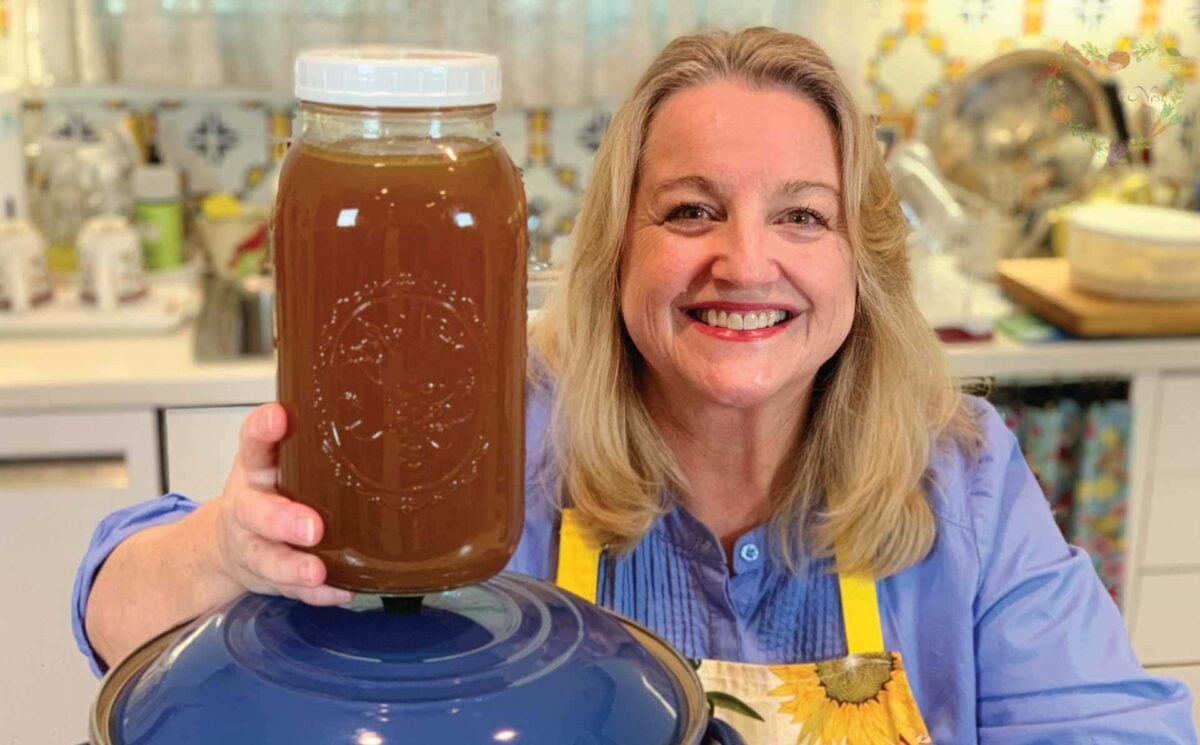
What Makes the Best Beef Bone Broth?
If you have been buying store-bought bone broth, you will be amazed at how good beef bone broth tastes when it is homemade. Plus you will be surprised at what a savings it can be. Even when using organic, grass-fed bones!
I conducted a side-by-side comparison and was pleased with the results. I found that not only did organic, grass-fed, homemade beef bone broth taste better, it was actually more economical than the best store-bought beef bone broth.
And I am all about being economical. That is why I love making bone broth of any kind. It often involves using up lots of kitchen scraps that might have otherwise wound up in the trash.
When making bone broth, kitchen waste can become close to a thing of the past. And as conscientious home cooks, we all want to work towards creating a zero-waste kitchen!
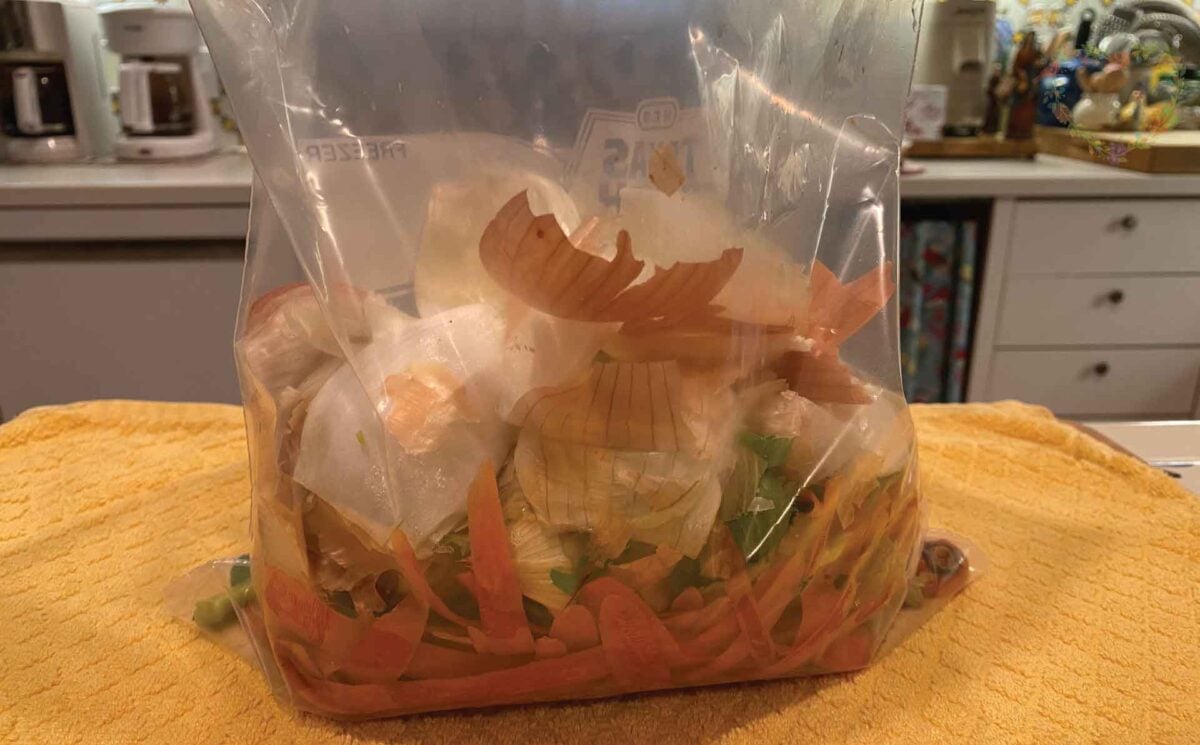
What is Bone Broth?
Bone broth can be made from any type of animal bones. The bones along with connective tissue and some meat are slow-cooked for twelve hours and then strained to make a clear broth.
As the bones and tissues are naturally high in collagen and as they cook these break down and transfer the collagen to the soup. You are left with a broth that’s packed with collagen and rich flavors.
You can learn more about what makes it different from a regular broth in my post on the differences between broth, stock, and bone broth.
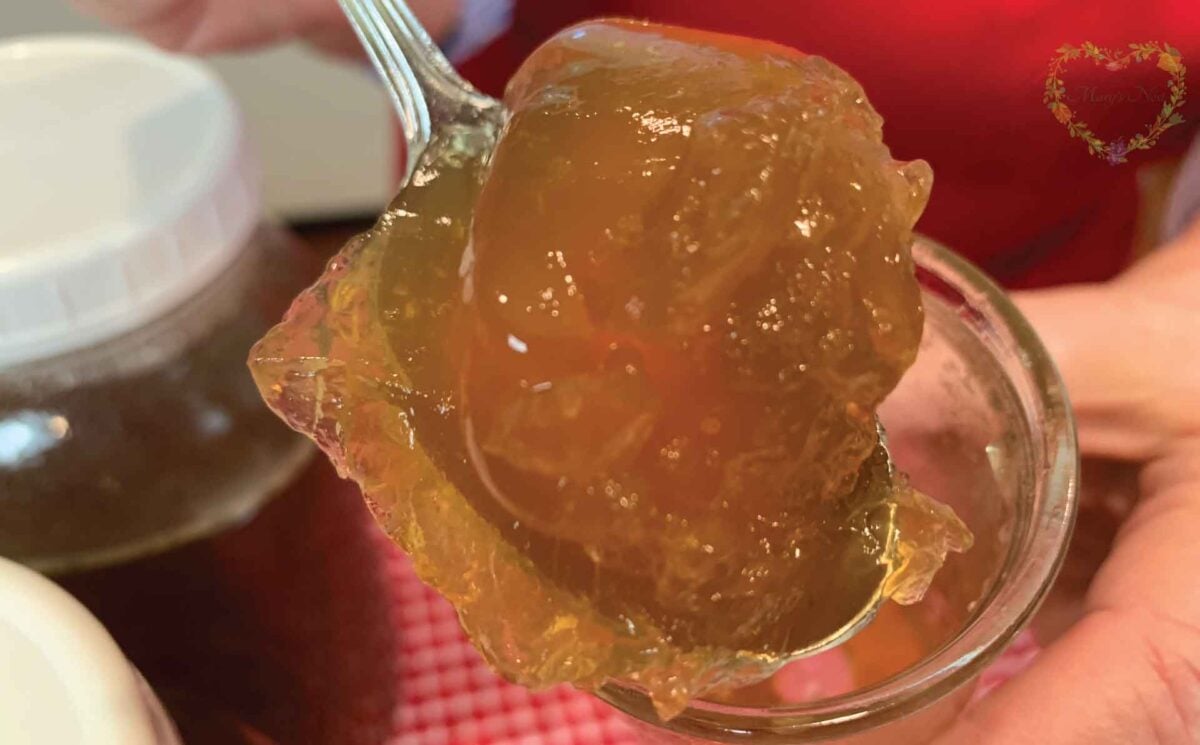
Why Is a Gelatinous Bone Broth Important?
I put a lot of emphasis on creating a gelatinous beef bone broth. If you overcook your bone broth or don’t use the right kinds of bones, your bone broth may be low in gelatin.
Instead, we want do do what we can to ensure that our bone broth is high in gelatin by selecting the best bones for bone broth and by cooking the bones at the right temperature for the right period of time. In doing so, the bones in our bone broth will release their collagen, and this collagen will turn into gelatin. And when we consume gelatin, it nourishes our entire bodies, including our skin, our hair and nails, our joints, and our guts.
Ingredients to Make Bone Broth
Find the full printable recipe with measurements below.
Wondering how to make bone broth taste better? For this specific recipe, I recommend the following ingredients for achieving a gelatinous and delicious bone broth.
- Beef bones: You can use a mixture of marrow bones, beef shank bones, beef neck bones, a beef knuckle bone, and oxtails.
- Red vermouth, port, marsala, or madeira: This adds a more complex flavor to your bone broth, but it is completely optional.
- Apple cider vinegar: This important ingredient helps to draw the minerals from the bones, making a more nutritious bone broth.
- Veggies, spices, and herbs: All you need are onions, celery, carrots, black peppercorns, and bay leaves to flavor your broth. You can also use any onion, carrot, or celery scraps you have saved in your freezer in place of using fresh vegetables. And don’t throw out your wilted lettuce! Add it to your bone broth.
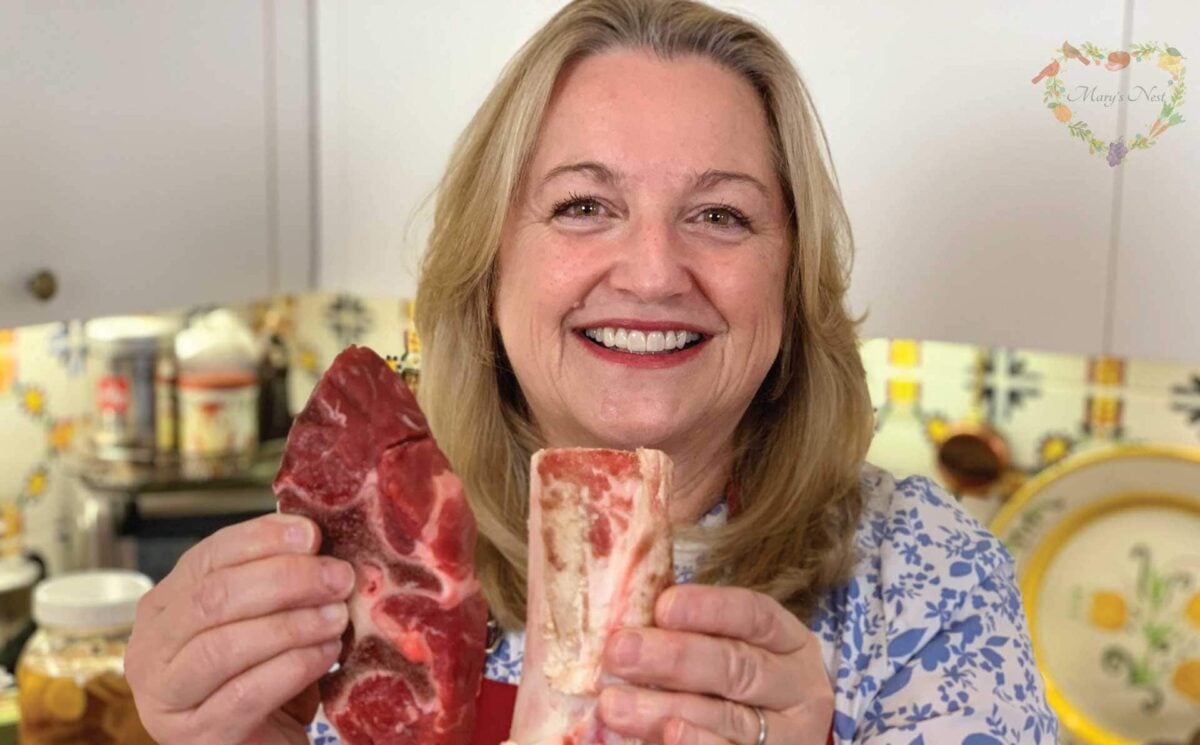
What are the Best Bones for Bone Broth?
To find a nice selection of beef bones check your local grocery store, the farmer’s market, or online sources like US Wellness Meats. (Update: Use promocode MARYNEST to save 15% off regular-priced items on your US Wellness Meats order.)
You might even be lucky enough to be able to buy beef bones from a local ranch or farm. When you are selecting your beef bones, make sure to choose a variety. Include a mix of marrow bones, meaty bones such as shanks, and high-cartilage bones such as oxtails, knuckles, or patellas.
If you’re unfamiliar with what all of these bones look like, don’t worry. I’ve got you covered. Be sure to check out my Best Bones for Making Beef Bone Broth video where I show you all these bones and share some of my favorite combinations.
If you can find beef feet, you will make a very gelatinous bone broth. And there’s a bonus! Using beef feet will yield multiple batches of bone broth. Or what I like to call, Perpetual Beef Bone Broth!

How to Make Beef Bone Broth
Once you learn how to make beef broth from bones, you’ll want to make sure you always have a regular supply on hand.
PRO TIP: Before we get started, here are a few things to note about using the slow cooker. You need a slow cooker that has a “Keep Warm” setting that heats to 180°F (82°C). This temperature creates the perfect environment for making delicious, gelatinous bone broth.
You can test this by filling your slow cooker with water, setting it on Keep Warm, and testing the temperature with a cooking thermometer after a few hours.
If your slow cooker does not have a “Keep Warm” setting, you will need to put it on the low setting and adjust the lid slightly to one side to allow for some of the heat to escape to prevent the broth from boiling.
Step 1 – Place the beef marrow bones and the knuckle bone into the slow cooker or stock pot.
Step 2 – Bake the beef shanks, neck bones, and oxtails on a baking sheet until the bones have browned.
Step 3 – Add the browned bones to your slow cooker or pot along with the onions, celery, carrots, bay leaves, and peppercorns. Cover all the ingredients with water.
Step 4 – Cover all the ingredients with water and cook the bones at a simmer for 12 hours.
Step 5 – After the broth cools, strain the ingredients with a slotted spoon.
PRO TIP: You can reuse the ingredients to make a second batch of broth.
Step 6 – Line a colander with cheesecloth or a flour sack towel and place it over a deep pot. Transfer the broth with a ladle to the lined colander so the broth drains through the lined colander and into the deep pot.
Step 7 – Transfer the pot to the refrigerator until the fat rises to the top and congeals. Skim off the fat.
PRO TIP: Keep the beef fat in a separate container and use it in other recipes.
Step 8 – Store the broth in airtight containers and store it in the fridge or freezer.
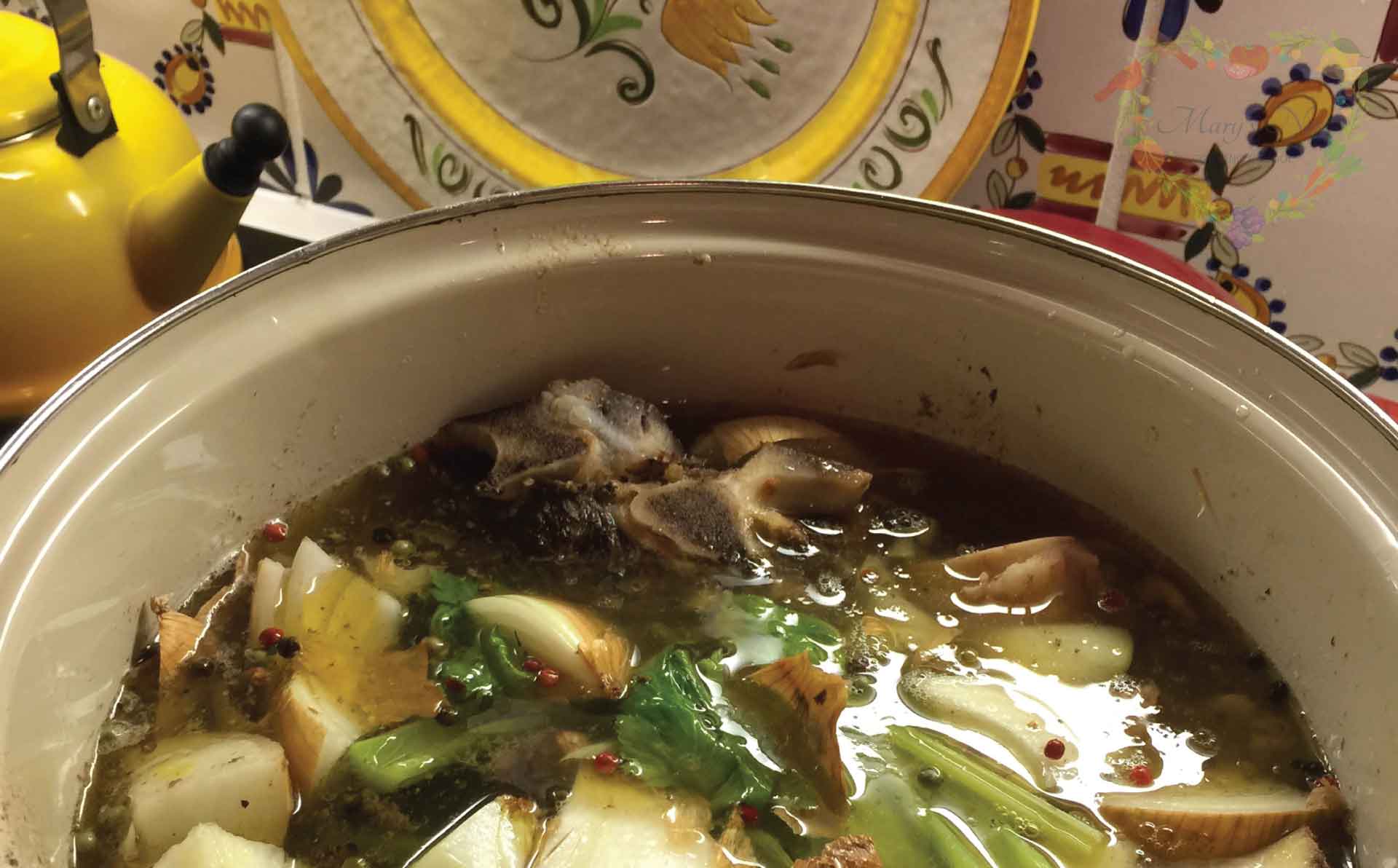
For more tips when cooking on the stove, watch my how to make bone broth on the stovetop recipe video.
How to Make Instant Pot Beef Bone Broth
Although we can also use the Instant Pot to make beef bone broth, will it be as gelateneous and tasty as making it on the stovetop or slow cooker? I’m pleased to say that when prepared correctly, beef bone broth turns out with the same rich flavor and it’s gelatinous too.
So what did I do to achieve these results? I called the Instant Pot hotline! Here is the right way for making beef bone broth in the Instant Pot:
- Make sure you use just enough water to cover the ingredients.
- Limit your cooking time to two hours. The reason for this is that too much pressure for too long will hamper your ability to create a gelatinous bone broth.
- Choose the “LOW” pressure setting on your Instant Pot. This is probably the most important tip. Too much pressure will create too high of a temperature that will destroy the chance of creating a gelatinous end product.
Following these best practices will ensure that your final product will be rich in flavor and gelatinous.
Recipe Tips
No matter which cooking method you choose, don’t use too much water. It’s the enemy of creating a gelatinous bone broth under any circumstances.
- Use a variety of bones. It’s ok if it doesn’t match the exact list in the recipe.
- Wondering where to find bones? Marrow bones or beef shanks (also called Osso Bucco) are usually readily available at most grocery stores as are beef shanks (sometimes referred to as Osso Buco). Neck bones may be harder to find, but oxtails are often available at the grocer during the springtime. If you do not see any bones at your grocery store, be sure to speak with the butcher. They may have them behind the counter, or you may be able to request a special order.
- Include a combination of bones.Knuckle bones, neck bones, oxtails, or a combination of all these bones for a more nutritious and gelatinous broth.
- Roasting marrow bones. Just taking a few minutes to roast your bones will help to make your makes a lovely broth with great flavor.
- All you need is 12 hours to cook the bones. This time is sufficient to leach the nutrients out of the bones and create a nice gelatinous broth. Cooking for too long can actually “break” the gelatin creating a watery broth, giving it an overly strong, almost “overcooked” flavor
- It’s possible to reuse your beef bones for a second batch of bone broth. Look for evidence of some cartilage or gelatinous areas remaining on the knuckle bones, neck bones, shank bones, or oxtails.
So be sure to watch the recipe video to learn more about how to create Rich and Gelatinous Beef Bone Broth right in your own kitchen! It’s very easy and you’ll wonder why you never did it before.
What to Do With Beef Bone Broth
Once you’ve made your beef bone broth there are so many ways to enjoy it and use it recipes:
- It’s suitable for sipping but you can also dehydrate bone broth to make homemade beef bouillon powder.
- You can use it to make beef stew, a beef bone broth soup, a flavorful beef gravy, or just about any soup or sauce that uses beef broth as one of the ingredients.
- Cook rice or grains in it to add more flavor.
- It’s great to add to smoothies in place of water. For beef bone broth, pair it with chocolate or coffee smoothies.
- Beef Bone broth is also delightful to enjoy sipping while warm and steaming, sprinkled with a little sea salt, straight from a mug.
Want more ideas? Explore them in this post on how to use bone broth.
Storing Tips
You can store the broth in multiple smaller containers or one single large container depending on how you plan to use it.
In the fridge, bone broth will stay fresh for 3-4 days. If frozen in the freezer of a refrigerator, it will stay fresh for 6 months. In a separate freezer that is not opened frequently, it will stay fresh for up to 12 months.
Download Your Free 36-Page Pantry List
For an extensive list of the traditional foods you can make and purchase to stock your pantry, be sure to download my free 36-page Traditional Foods Pantry List. This comprehensive eBook is full of links to recipe videos, helpful articles, and more!
And if you’re looking for a printed book full of my traditional foods recipes to show you how to create a traditional foods kitchen, be sure to preorder your copy of my new book, The Modern Pioneer Cookbook.
Kitchen Academy Videos
Are you looking for more traditional foods videos? If so, I invite you to join the Traditional Foods Kitchen Academy. Members of this optional paid YouTube community get access to exclusive videos, live streams, and other members-only perks. Plus, your YouTube comments include a special members-only badge.
More Kitchen Pioneer Videos
How to Make Oatmeal Higher in Protein (The Old-Fashioned Way)
Turn simple oats into a hearty, protein-rich porridge.
The Only Traditional Recipes You’ll Ever Need!
Focus on traditional recipes with real food. Don’t chase trends.
Let’s Talk Akkermansia: A Tiny Helper for Big Gut Health
Discover how Akkermansia muciniphila supports gut and immune health—and how traditional foods help this mighty microbe thrive.
Stay in Touch with Mary’s Nest
- Subscribe to My YouTube Channel for Traditional Foods Videos (Free) - When you subscribe, be sure to click on the notification bell that will let you know each time I upload a new video.
- Subscribe to Mary’s Traditional Foods Newsletter (Free) - Get a free 36-page eBook for signing up: How to Stock Your Essential Traditional Foods Four-Corners Pantry.
- Join the Traditional Foods Kitchen Academy - For more detailed videos and exclusive members-only perks, join my YouTube membership community.
- Order The Modern Pioneer Cookbook - Get a hardcover book of Mary's nourishing recipes from a Traditional Foods Kitchen. This bestselling cookbook is published by Penguin Random House with their DK imprint.
- Order The Modern Pioneer Pantry - Get Mary's latest hardcover cookbook about preserving food and making delicious meals from your Four Corners Pantry. Mary's second cookbook is also published by Penguin Random House.
I look forward to having you join me in my Texas Hill Country Kitchen!
I’d like to receive more tips and recipes from Mary’s Nest.
How to Make Rich and Gelatinous Beef Bone Broth
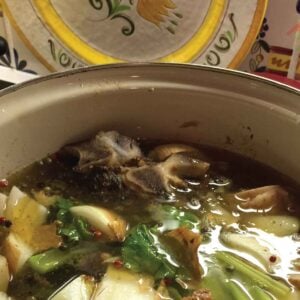
Ingredients
- 4 lbs Mixture of beef bones Marrow bones, beef shank bones, beef neck bones, a beef knuckle bone, and oxtails
- 1 cup Red vermouth, port, marsala or madeira Optional
- 1/4 cup Apple cider vinegar
- 3 Onions Quartered with skins on
- 3 Celery stalks
- 3 Carrots
- 2 Bay leaves
- 10 Peppercorns
- 1 Filtered water Enough to cover all the ingredients
Instructions
- Place the beef marrow bones and the knuckle bone into an 8-Quart slow cooker or stock pot. (If you are using a 6-Quart slow cooker, you will need to reduce the amount of bones that you are using to 3 pounds.) If you choose to use the red vermouth, etc., you can omit the apple cider vinegar. Add the red vermouth or apple cider vinegar and water to the slow cooker or stock pot just to cover the marrow bones and knuckle bone.
- Place the beef shanks, neck bones, and oxtails on to a baking sheet and bake in a 350 F degree oven until the bones have browned, approximately one hour. Once browned transfer the bones from the baking sheet to the slow cooker. Also add the onions, celery, carrots, bay leaves, and peppercorns to the slow cooker and fill with the slow cooker with water to cover all the ingredients.
- If using a slow cooker, turn it to the high setting for one hour, then turn it down to the keep warm setting and allow to simmer on keep warm for 12 hours. If your slow cooker does not have a keep warm setting, turn it down to the low setting but tilt the slow cooker lid to allow for some of the steam to escape to prevent the broth from boiling.
- If using a stock pot on the stove, bring to a boil and immediately reduce heat to low and simmer for 12 hours.
- After 12 hours, turn off the slow cooker or stove. Allow broth to cool slightly and then begin to strain ingredients with a slotted spoon. Reserve ingredients to be re-used to make a second batch of broth.
- Once all the ingredients have been strained from the broth, line a colander with cheese cloth or a flour sack towel and place over a deep pot. Use a ladle to transfer broth from the slow cooker or stock pot into the lined colander. The broth will drain through the lined colander into the deep pot.
- Once all the broth has been strained through the lined colander into the deep pot, transfer this pot to the refrigerator until the fat rises to the top and congeals. Skim off this fat and transfer it to a separate container to be used in other recipes. Transfer the broth to container(s) with a cover that can then be refrigerated or frozen. You can store the broth in multiple smaller containers or one single large container depending on how you plan to use it. This bone broth will stay fresh for 3-4 days when refrigerated. If frozen in the freezer of a refrigerator, it will stay fresh for 6 months. In a separate freezer that is not opened frequently, it will stay fresh for up to 12 months.
Video
Notes
Shop for items used in this blog post or video
- Visit Mary's Nest Amazon Shop
-
Visit my Shopping Guide page
Get up to 15% off for Stocking your Traditional Foods Pantry and Equipping your Modern Pioneer Kitchen, including discounts from US Wellness Meats, Mockmill Grain Mill, Masontops, Cultures for Health, Survival Garden Seeds, Redmond Real Salt, Plan to Eat, and more!
Favorite Bone Broth Making Supplies:
- 8-Quart Duo Plus Instant Pot
- 16-Quart Stock Pot
- 8-Quart Stock Pot
- 7-Quart Slow Cooker
- 8-Quart Slow Cooker
- 10-Quart Slow Cooker
- Fat Separator
- Stainless Steel Strainer
- Flour Sack Towels
Affiliates note: As an Amazon Associate I earn from qualifying purchases. My content may contain affiliate links to products and services. If you click through and make a purchase, I’ll receive a small commission. It does not affect the price you pay.
Disclaimer:I am not a medical doctor, a medical professional, a dietician, or a nutritionist. All content found on the MarysNest.com website, including text, images, videos, eBooks or eGuides, social media, or other formats, were created solely for informational purposes only. The content is not intended to be a substitute for professional medical advice, diagnosis, or treatment. Always seek the advice of your physician or other qualified healthcare provider with any questions you may have regarding a medical condition or proper nutritional advice. Never disregard professional medical advice or delay in seeking it because of something you have watched in a video or read on this website. Use caution when following the recipe in this video. The creator and publisher of this video and website will not be held responsible for any adverse effects that may arise from the use of this recipe and method or any other recipe and method on this website or corresponding video channel.

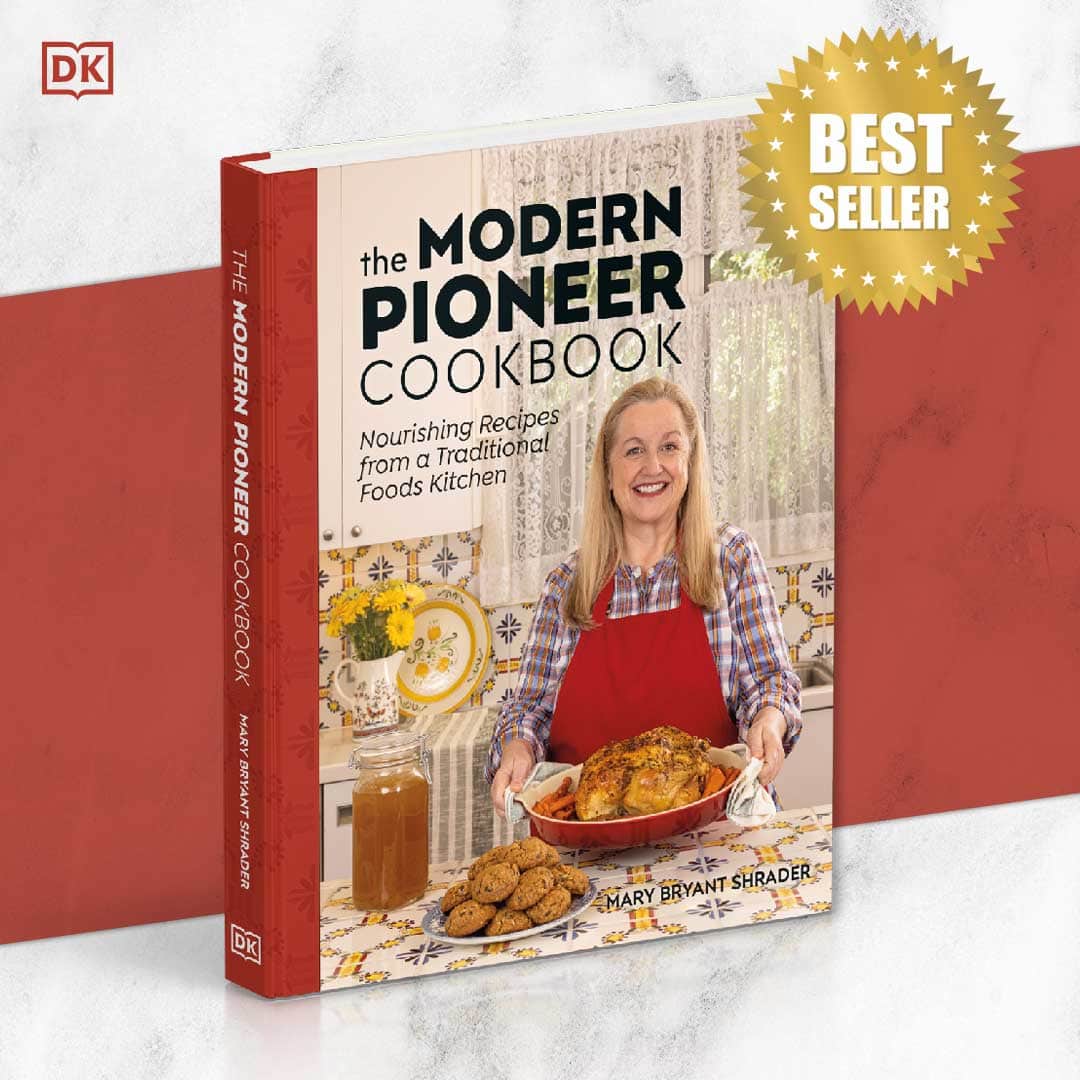


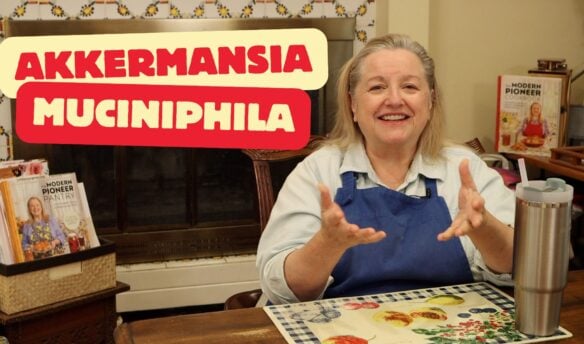


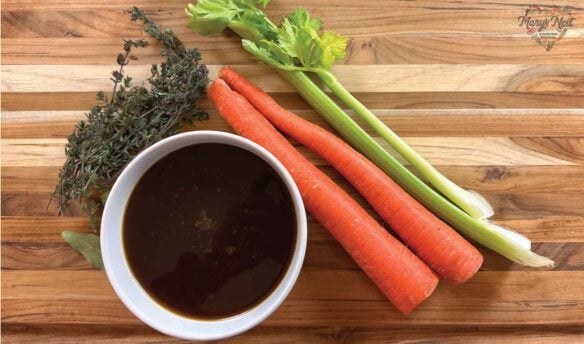
Loved the video…. I have your book too!
I’m making this for the first time. Your detailed instructions and calm demeanor made it easy and fun! Thank you, Mary
Hi Merri,
Thanks for you wonderful comments! I’m so glad that you enjoyed my book and that we’re on this traditional foods journey together!
Love and God bless,
Mary
Hi Mary, When you make your different bone broths are you using organic bones and veggies or does it matter?
Hi Delinda, That is a great question. I try to use bones from grass fed animals and organic veggies but I don’t stress about it and use what is in my budget. Also, as to the veggies, I don’t worry if I can find the clean 15 that are not organic but are not heavily laden with pesticides – like onions. Love, Mary